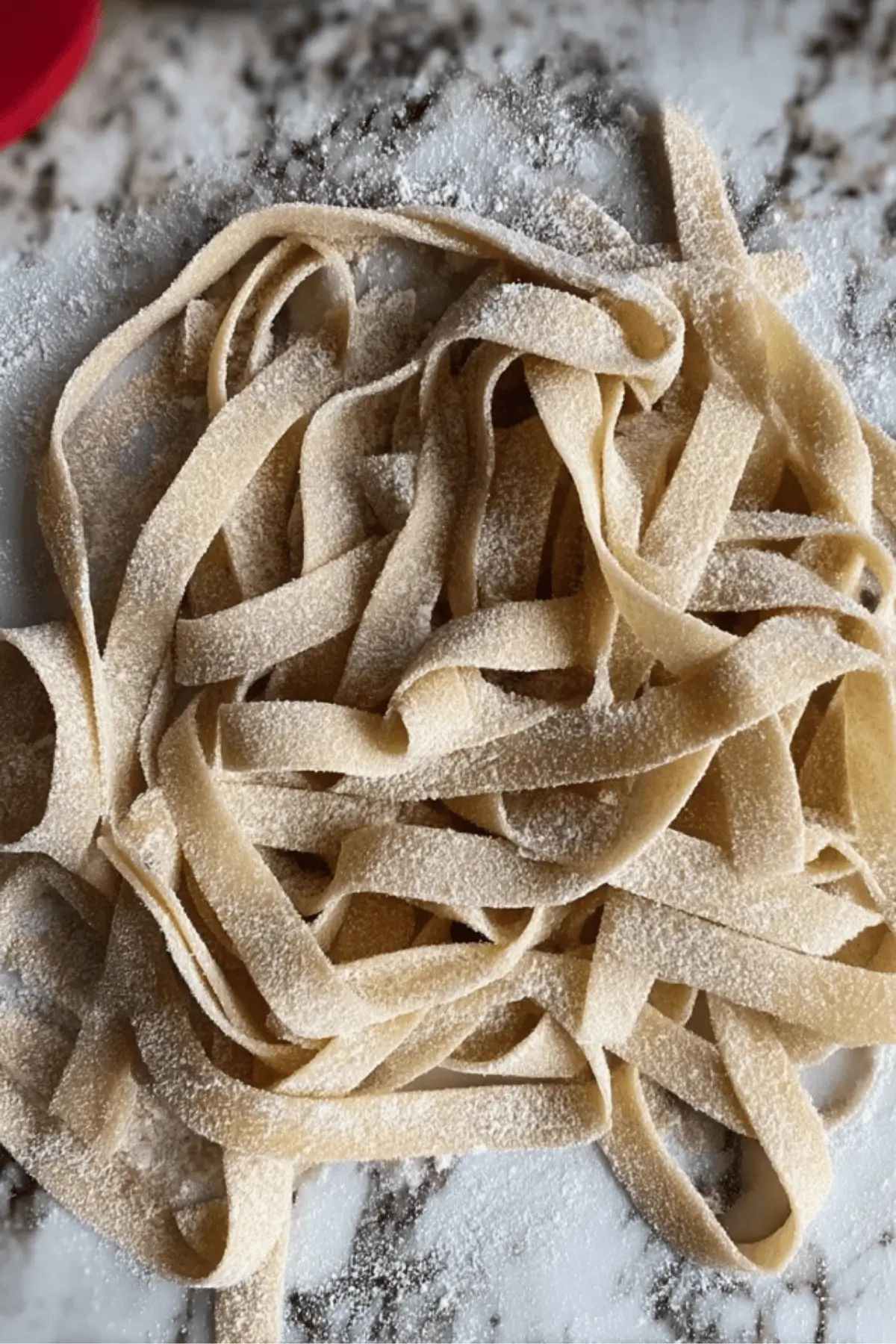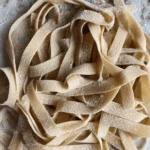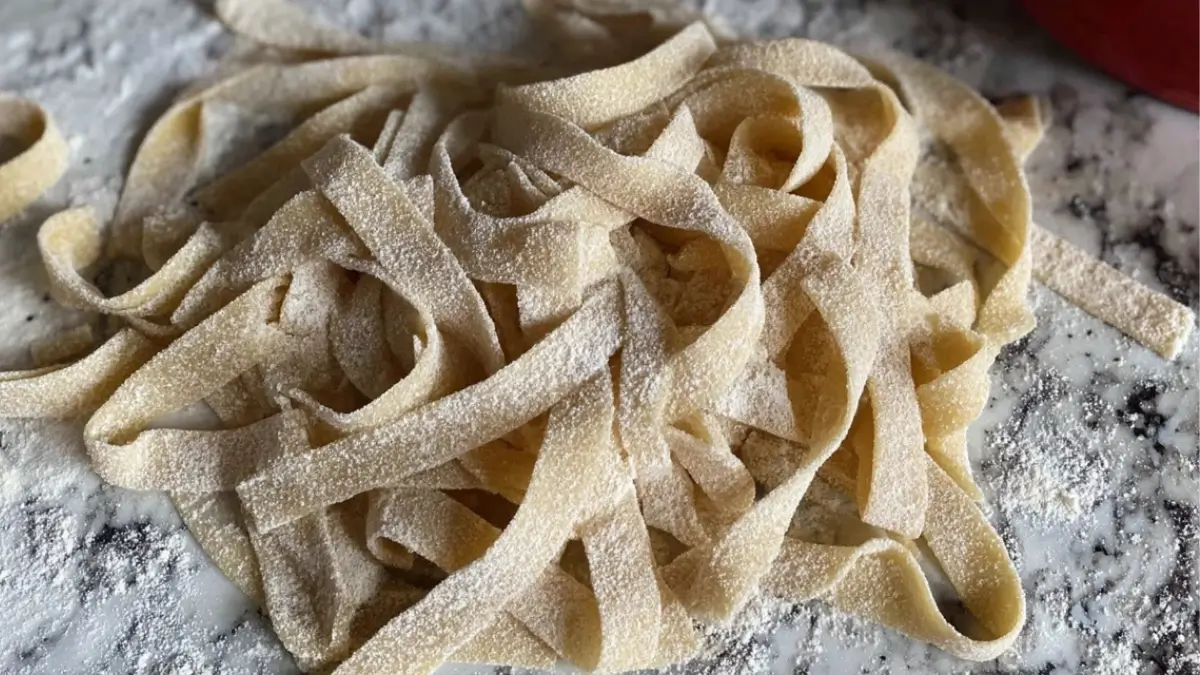There’s something magical about turning flour and eggs into silky ribbons of pasta, especially when you’re doing it from scratch for the first time. I still remember the first time I made homemade pasta—it was a rainy Saturday, and with a little curiosity and a lot of flour, I created something that felt both ancient and personal. Since then, it’s become my go-to when I want to cook something impressive yet grounding, especially in small, manageable quantities.
This easy sheet pan dinner may not involve an oven, but it definitely fits in the category of quick and healthy meals you can craft with simple ingredients. This lemon herb chicken recipe might not be in the title, but we’ll take that same energy—simple, fresh, beginner-friendly—and bring it into the world of pasta. This small batch pasta is ideal for beginner cooks because it’s a forgiving, flexible recipe that focuses on technique more than gadgets or perfection. Plus, it’s a fun way to involve kids or loved ones in the cooking process without feeling overwhelmed.

Why This Recipe is Special
What makes this homemade pasta recipe truly shine is how accessible it is. You don’t need a pasta machine or hours of free time—just a clean surface, a fork, and your hands. It’s also a single-bowl recipe at its heart, meaning fewer dishes to worry about. And because it’s small batch, there’s less pressure: mistakes are okay, and each attempt gets you closer to mastering the technique. It’s an excellent gateway into handmade cooking, teaching you how to feel the dough, trust your instincts, and create a meal with heart.
Ingredients and Preparation
All-Purpose Flour – This is your pasta’s structure. All-purpose is widely available and easy to work with, especially for first-time pasta makers. You can use 00 flour for a silkier texture, or even whole wheat flour for added fiber and a nuttier flavor.
Egg – Provides richness, color, and elasticity. Room temperature eggs incorporate better and help create a smooth dough. For a vegan option, try using a flax egg or silken tofu, though this will change the texture significantly.
Olive Oil – Adds smoothness and a touch of flavor. You can swap this with avocado oil or even melted butter for richness.
Salt – Enhances the flavor and brings out the natural eggy taste of fresh pasta. You can omit it from the dough if you plan to salt your pasta water heavily.
Water – Helps adjust the dough’s consistency. Use sparingly, just enough to bring the dough together. If your dough feels too dry, add water one teaspoon at a time. If it’s too wet, dust with flour.
Step-by-Step Instructions
Step 1: On a clean countertop or in a large mixing bowl, form your flour into a mound and create a well in the center. Crack your egg into the well, add the salt and olive oil, then use a fork to gently whisk the egg, gradually pulling in flour from the sides until a shaggy dough forms.
Step 2: Begin kneading the dough with your hands, folding and pressing it repeatedly for about 8–10 minutes until it becomes smooth and elastic. If the dough is too sticky, sprinkle with a bit more flour. If it’s too dry and crumbly, add a drop or two of water.
Step 3: Wrap the dough in plastic wrap or a clean kitchen towel and let it rest at room temperature for 30 minutes. This allows the gluten to relax, making it easier to roll out.
Step 4: Divide the rested dough into two portions. Using a rolling pin, roll each piece on a lightly floured surface into a thin sheet—about the thickness of a credit card. Take your time; thinner dough makes better pasta.
Step 5: Fold the sheet over itself several times, then use a sharp knife to cut into ribbons for fettuccine, strips for pappardelle, or even small squares for hand-cut noodles. Unfold and dust with flour to prevent sticking.
Step 6: Bring a large pot of salted water to a boil. Drop in your fresh pasta and cook for just 2–3 minutes until al dente. Fresh pasta cooks much quicker than dried varieties, so keep an eye on it.
Beginner Tips and Notes
If your dough cracks while rolling, let it rest longer or knead it a bit more to reactivate the gluten. If your pasta sticks together after cutting, dust it with extra flour or let the sheets dry slightly before cutting. For efficiency, prep your sauce or toppings while the dough rests. You can even use a wine bottle as a rolling pin in a pinch.
If you don’t have a fork to mix the dough in the well, just use your fingers—messy is part of the fun. Don’t worry about perfectly shaped noodles; the charm of homemade pasta is in its rustic look.
Serving Suggestions
Pair your fresh pasta with a simple lemon butter sauce, garlic and olive oil, or a classic marinara. To elevate it, toss in fresh herbs, roasted veggies, or grilled chicken for a more robust sheet pan-style meal. Leftover pasta can be stored uncooked in an airtight container in the fridge for up to 2 days, or frozen for later use. Cooked pasta should be refrigerated and enjoyed within 3 days.
Conclusion
If you’ve ever felt intimidated by the idea of homemade pasta, let this easy small batch recipe be your invitation to dive in. It’s a perfect project for a quiet afternoon, a special date night, or just a moment to reconnect with your food. Once you taste your own fresh pasta, you’ll see—it’s not just about the flavor, but the joy of making something from scratch. Try it out, make it your own, and don’t forget to share how it turned out in the comments. We’d love to hear your pasta stories.
FAQ About Easy Homemade Small Batch Pasta
1. Can I make this homemade pasta without a pasta machine?
Yes, absolutely. This recipe is designed to be rolled out by hand using a rolling pin (or even a wine bottle). It’s perfect for beginners without special equipment.
2. How do I know if I’ve kneaded the pasta dough enough?
Your dough is ready when it feels smooth and elastic, not sticky or crumbly. This usually takes 8–10 minutes of steady kneading. If you press a finger into the dough and it springs back slightly, you’re good to go.
3. Can I store homemade pasta for later?
Yes. Uncooked pasta can be stored in the refrigerator for up to 2 days in an airtight container, or frozen for up to 2 months. Cooked pasta should be refrigerated and eaten within 3 days.
4. What sauces go best with fresh pasta?
Simple sauces like garlic and olive oil, lemon butter, or tomato-based marinara work beautifully with fresh pasta. Avoid overly heavy sauces that can overpower the delicate texture.
More Relevant Recipes
Print
How to Make Easy Homemade Pasta
- Total Time: 48 minutes
- Yield: 2–3 servings
- Diet: Vegetarian
Description
This easy homemade small batch pasta recipe is perfect for beginners. Made with simple ingredients and no special equipment, it’s ideal for quick, healthy meals.
Ingredients
- All-purpose flour – for structure
- Egg – for richness and elasticity
- Olive oil – adds smoothness and flavor
- Salt – enhances flavor
- Water – adjusts dough consistency
Instructions
- On a clean countertop or in a bowl, form the flour into a mound with a well in the center. Add the egg, salt, and olive oil to the well, and gently whisk with a fork while gradually incorporating the flour.
- Knead the dough for 8–10 minutes until smooth and elastic. Add a little water if too dry or flour if too sticky.
- Wrap the dough in plastic wrap or a towel and let it rest at room temperature for 30 minutes.
- Divide the dough and roll out on a floured surface to about credit card thickness using a rolling pin.
- Fold the dough and cut into strips or shapes as desired. Dust with flour to prevent sticking.
- Boil a pot of salted water and cook the pasta for 2–3 minutes until al dente. Drain and serve with your favorite sauce.
Notes
- If the dough cracks, knead longer or let it rest more.
- Use extra flour to prevent sticking after cutting pasta.
- A wine bottle can substitute for a rolling pin.
- Cooked pasta should be stored in the fridge and eaten within 3 days.
- Prep Time: 15 minutes
- Cook Time: 3 minutes
- Category: Main Dish
- Method: Handmade
- Cuisine: Italian
Nutrition
- Serving Size: 1 serving
- Calories: 220
- Sugar: 0g
- Sodium: 190mg
- Fat: 6g
- Saturated Fat: 1g
- Unsaturated Fat: 5g
- Trans Fat: 0g
- Carbohydrates: 33g
- Fiber: 1g
- Protein: 7g
- Cholesterol: 55mg

